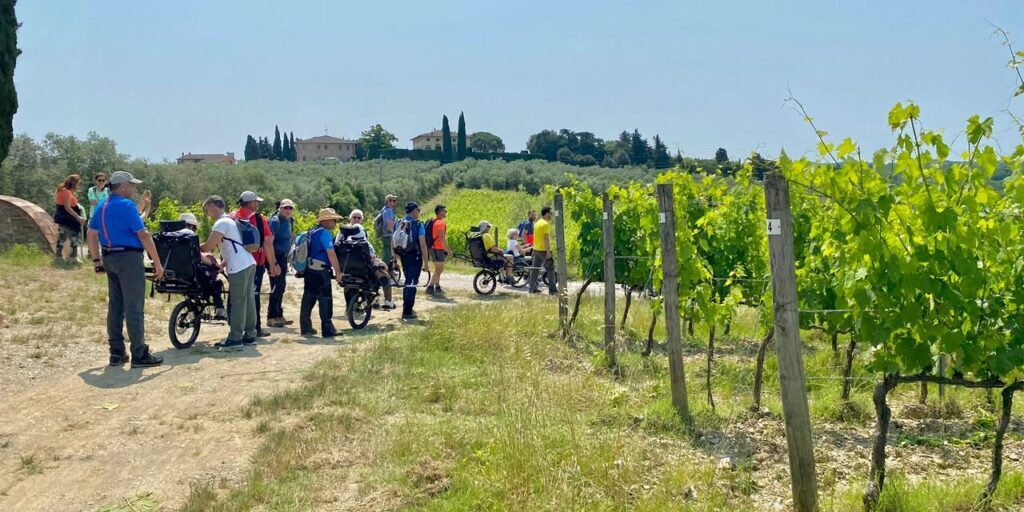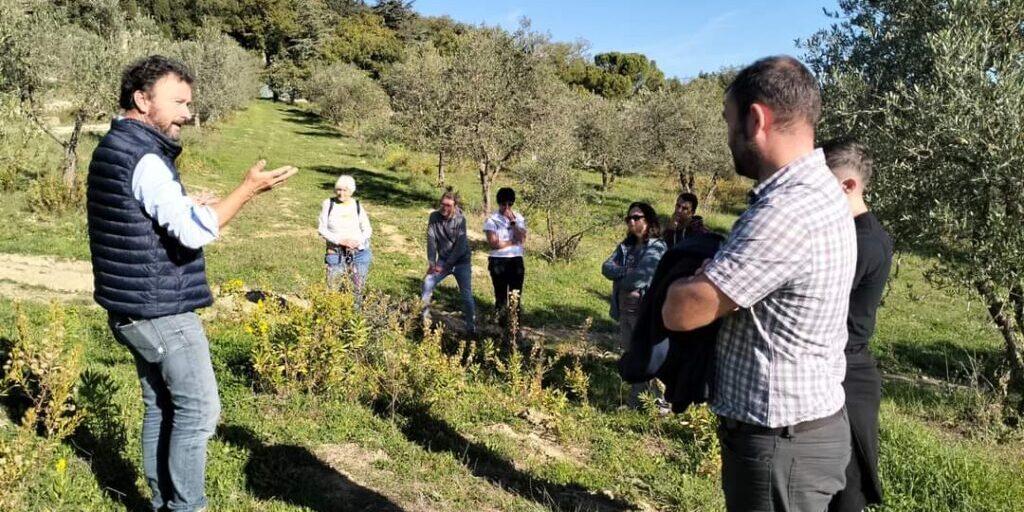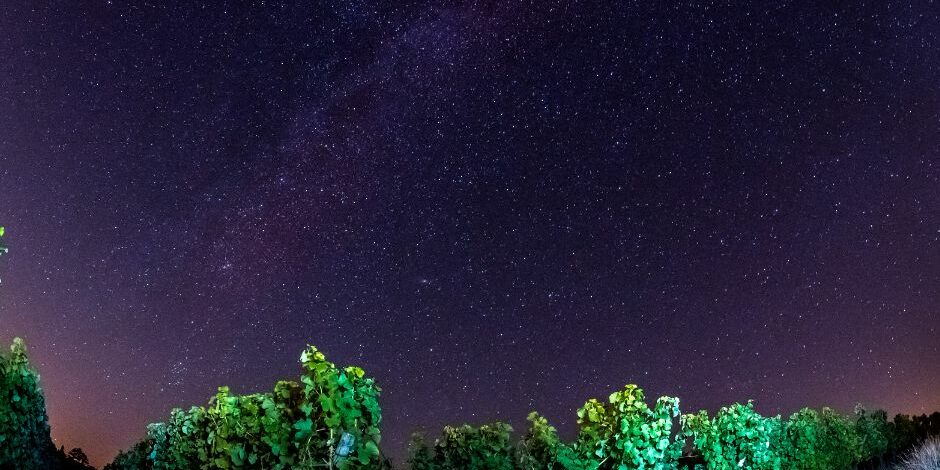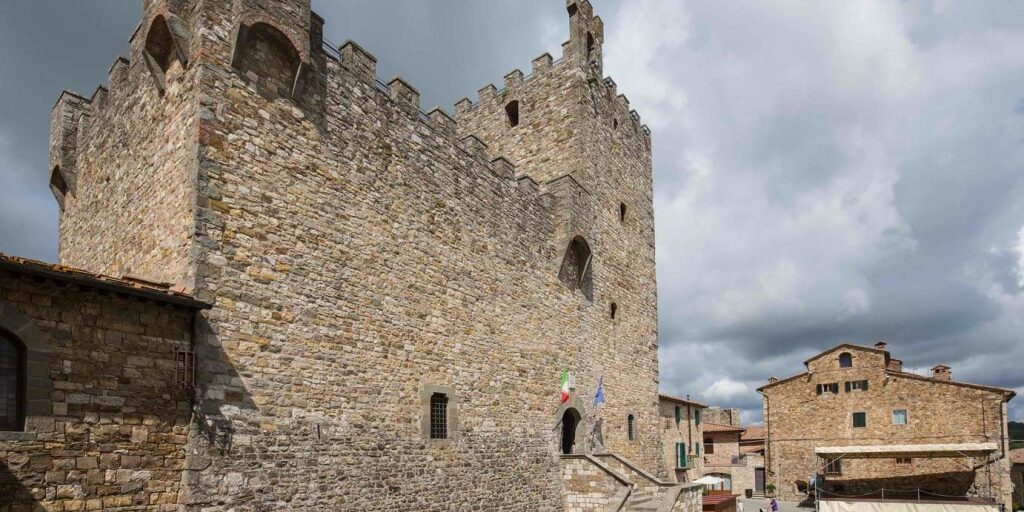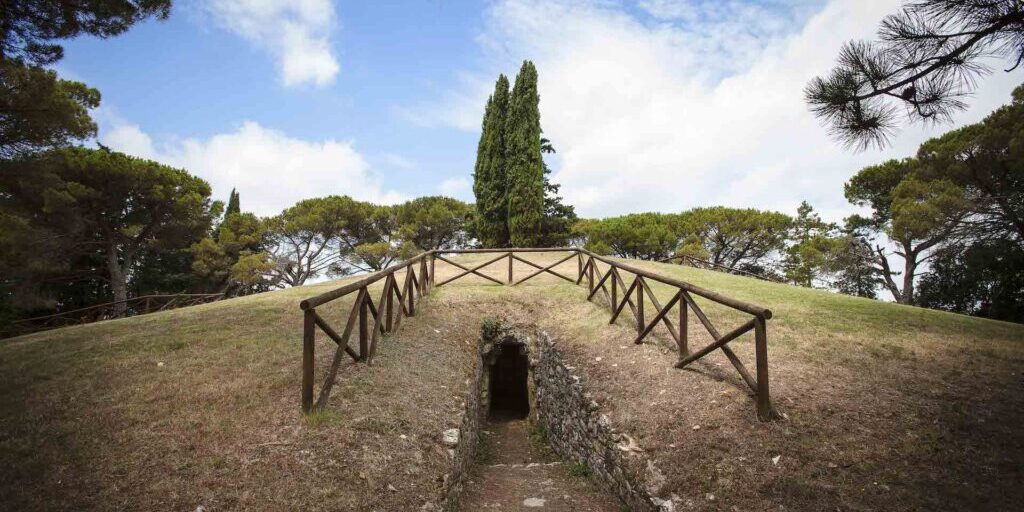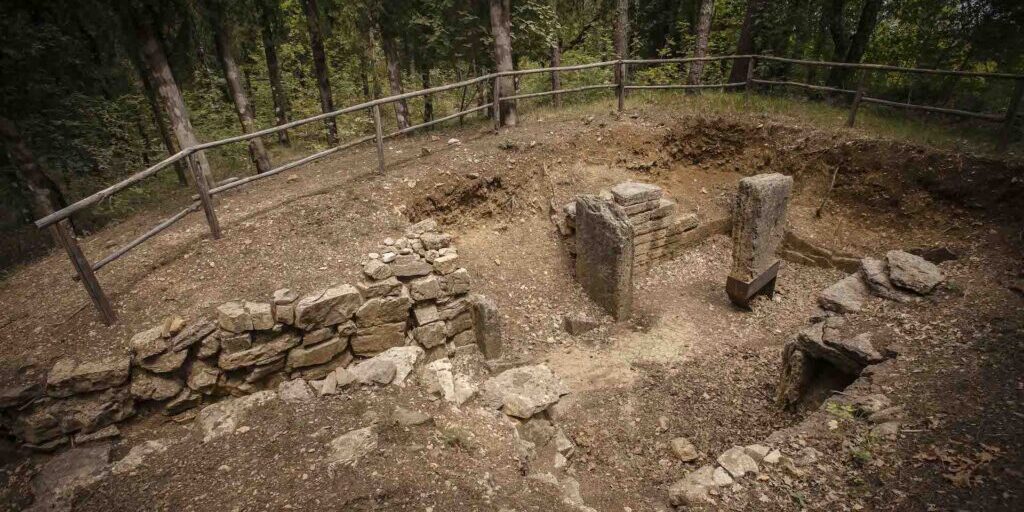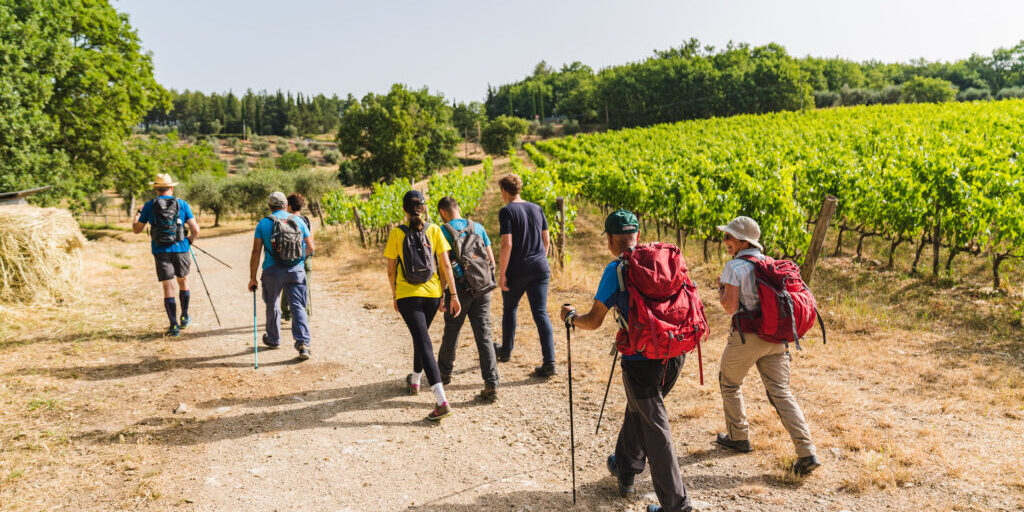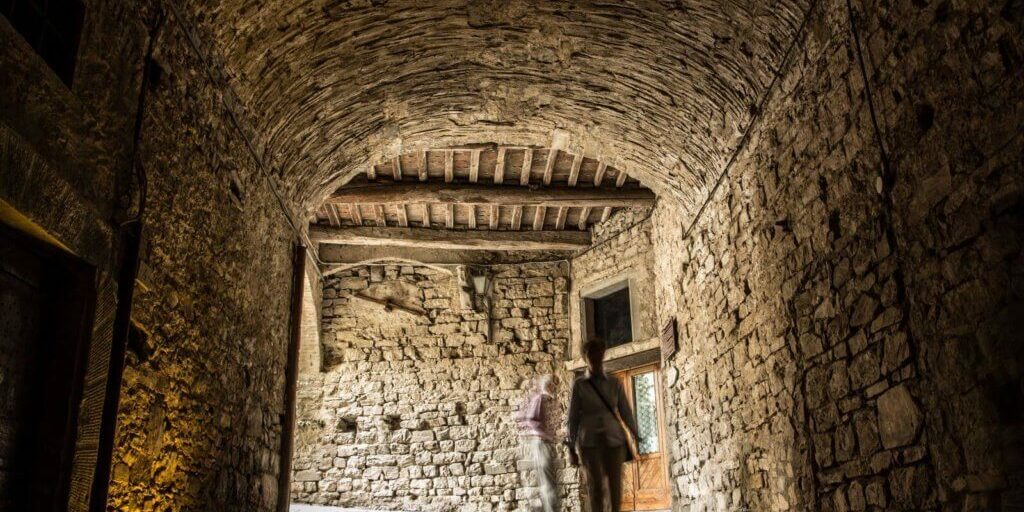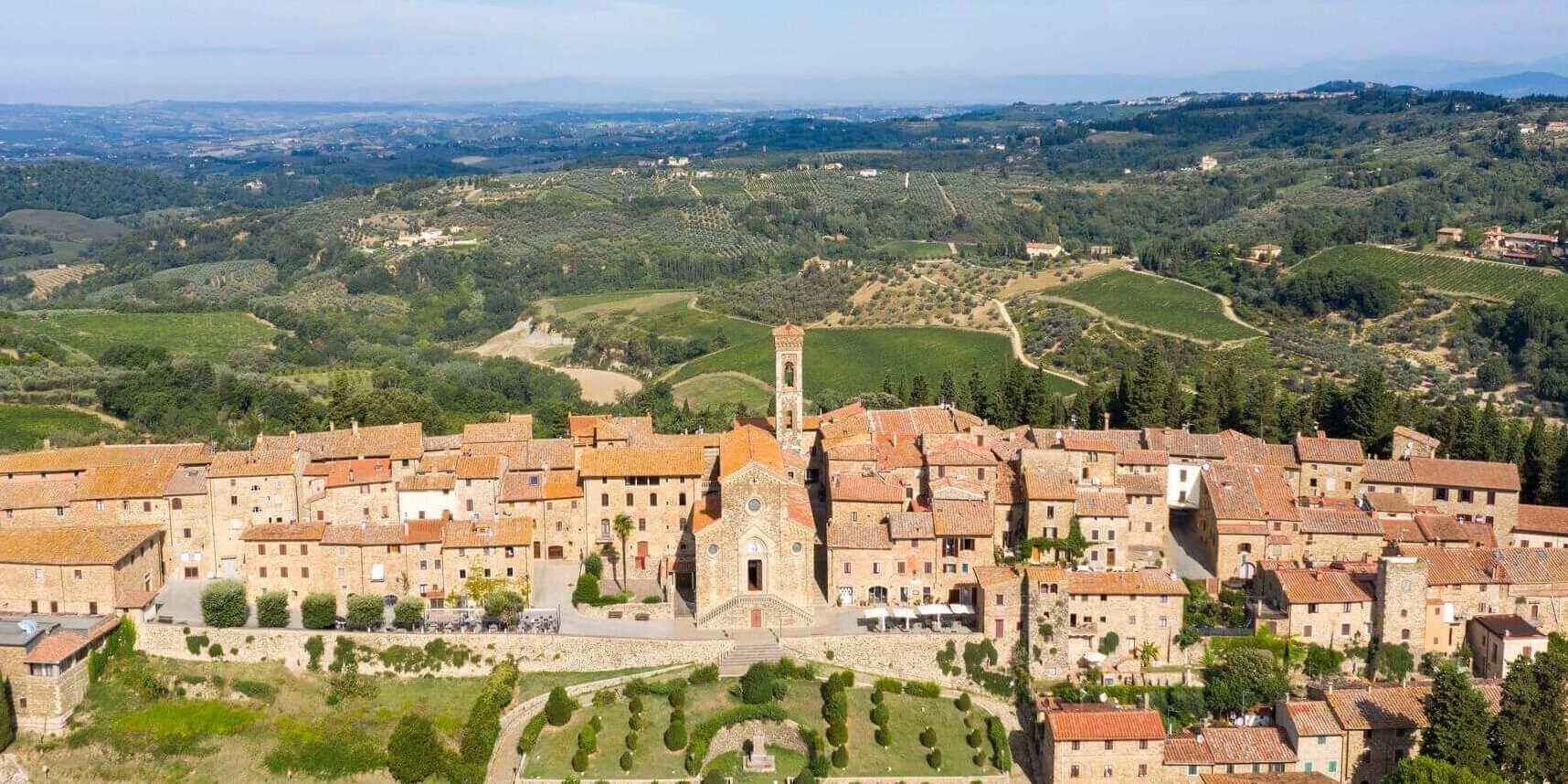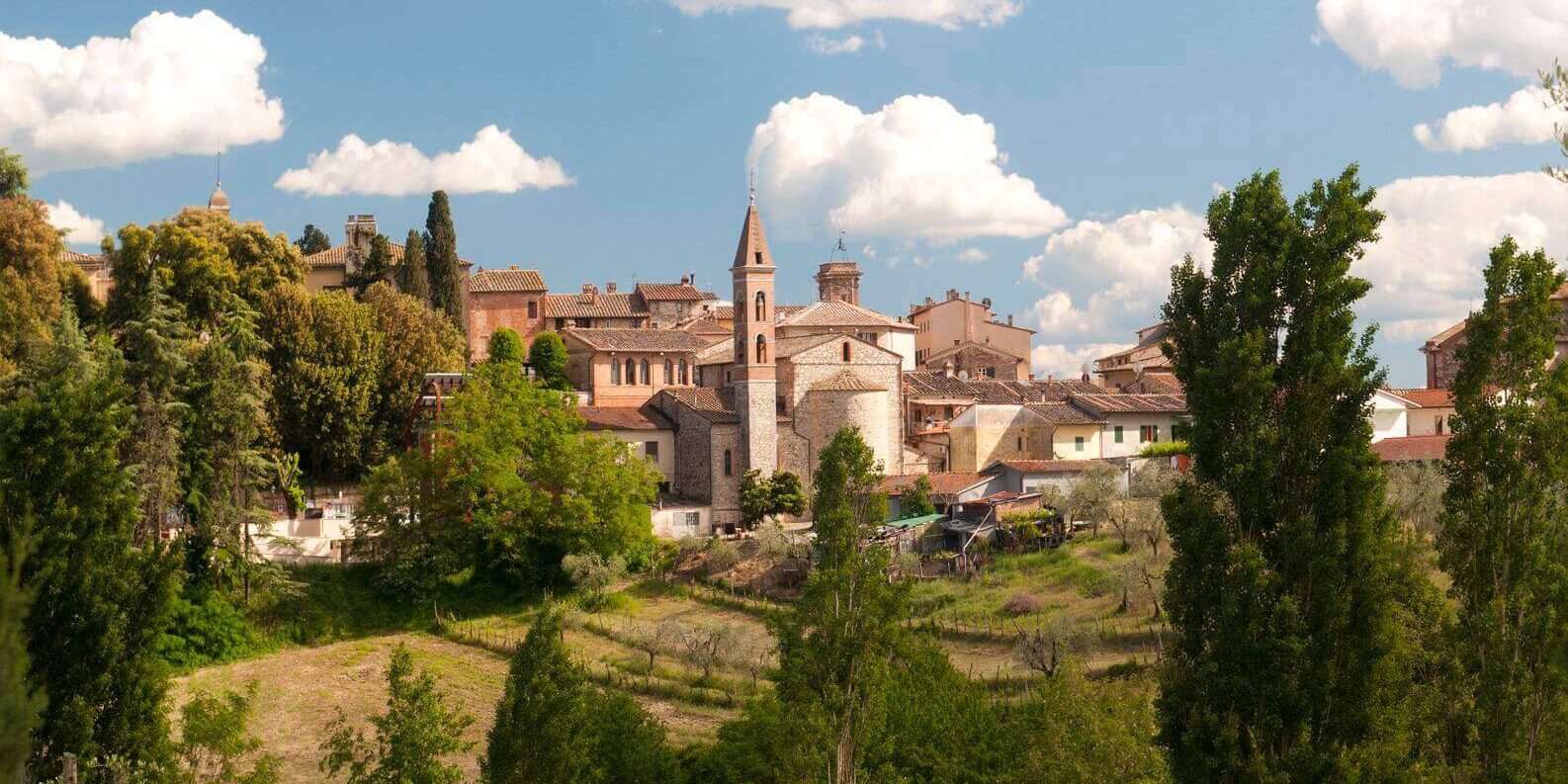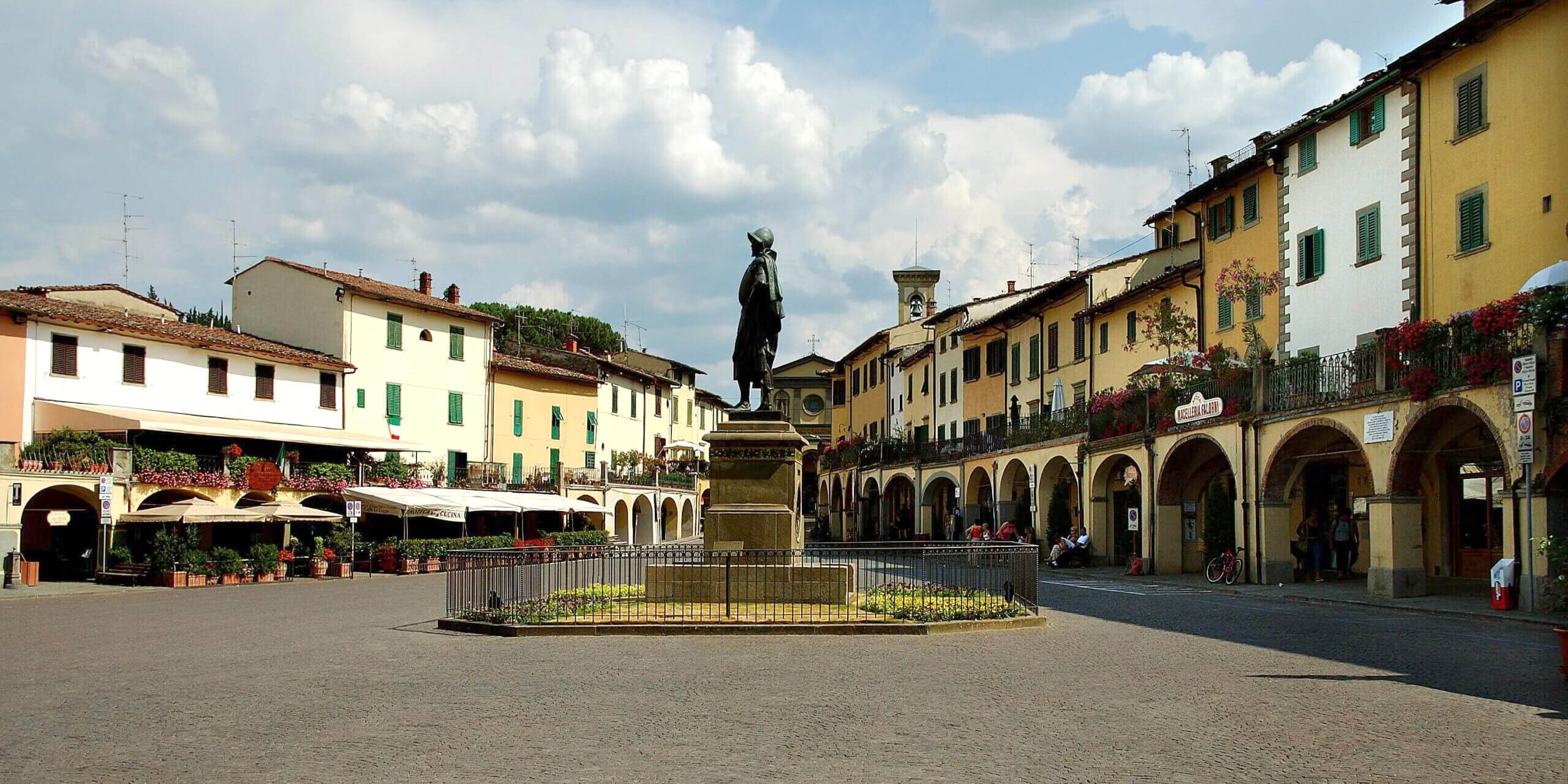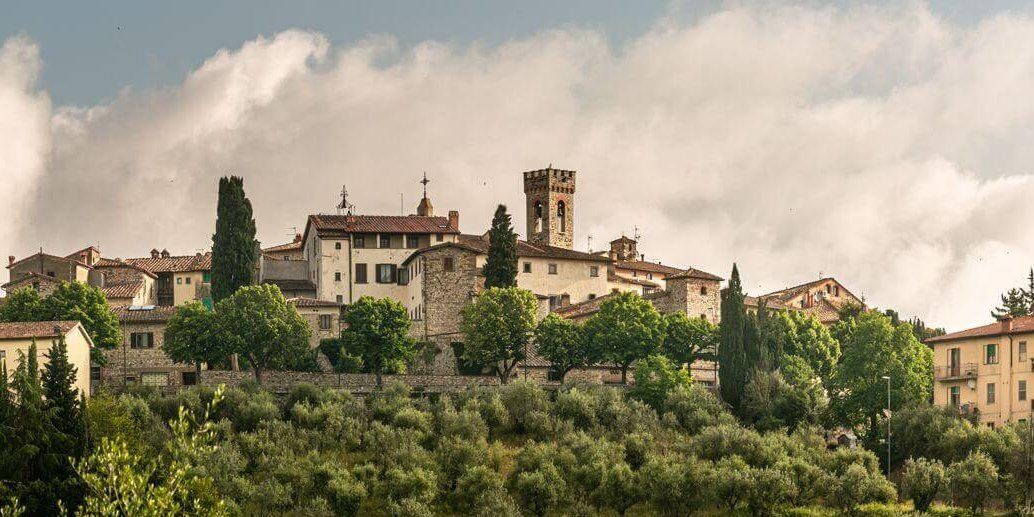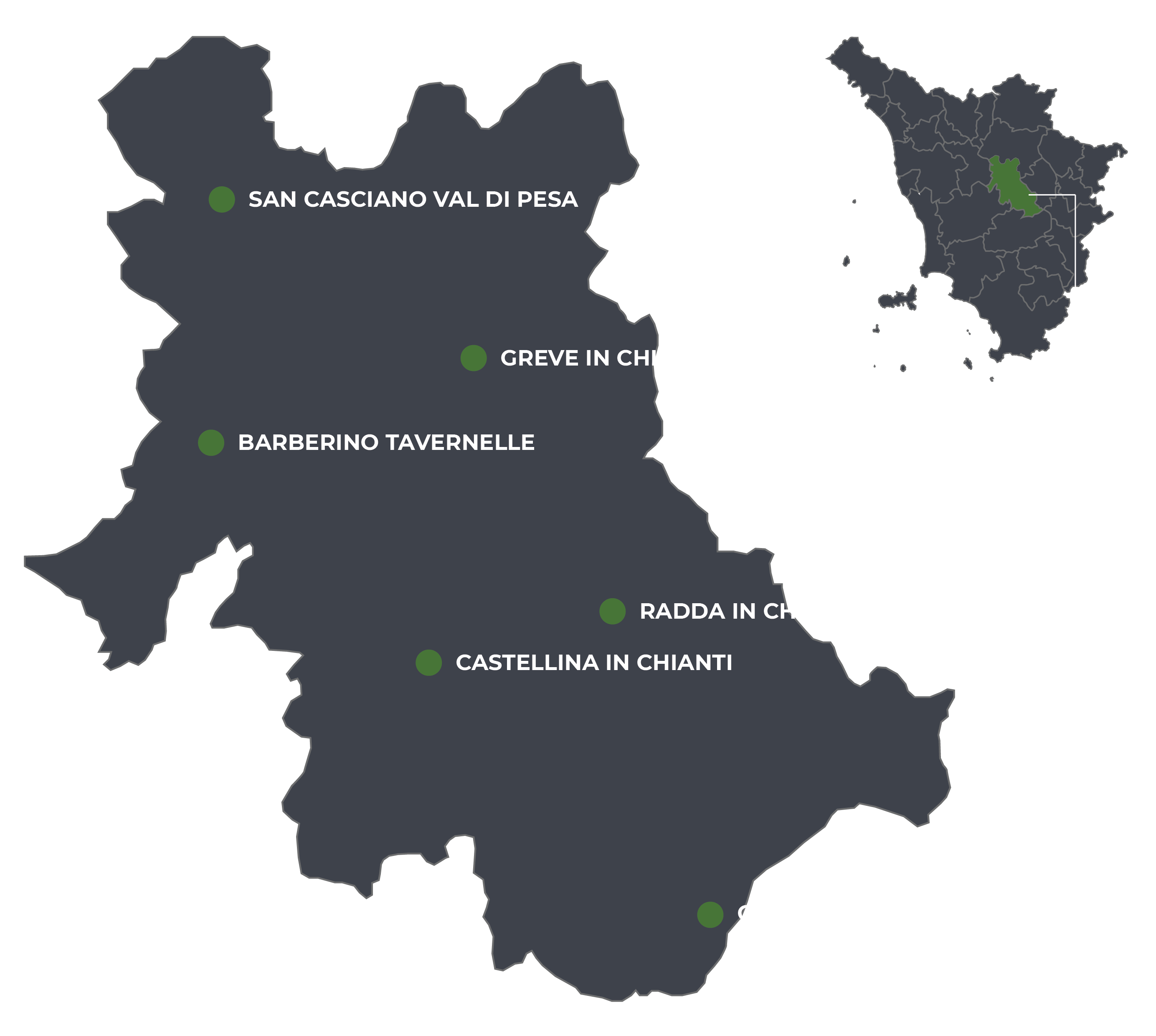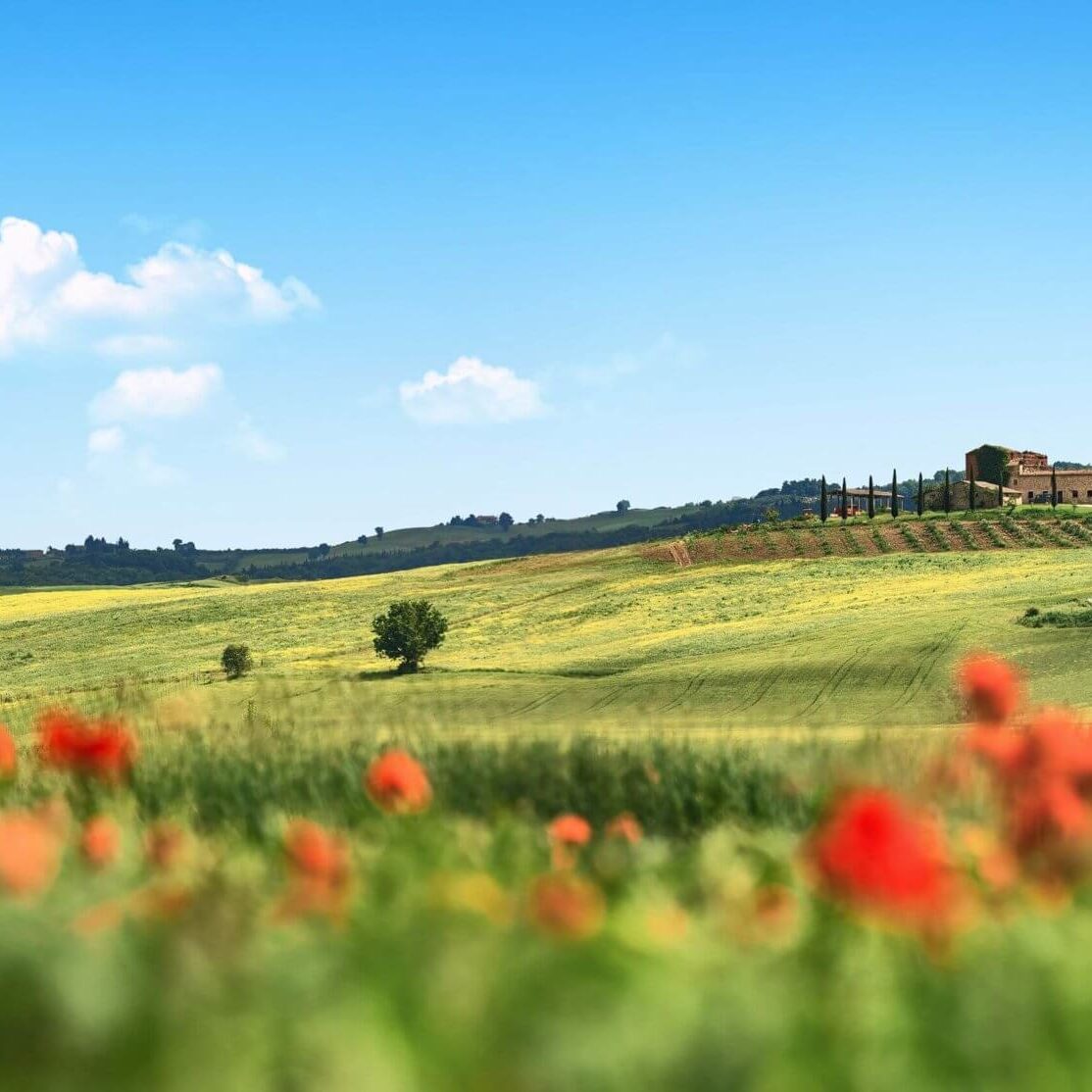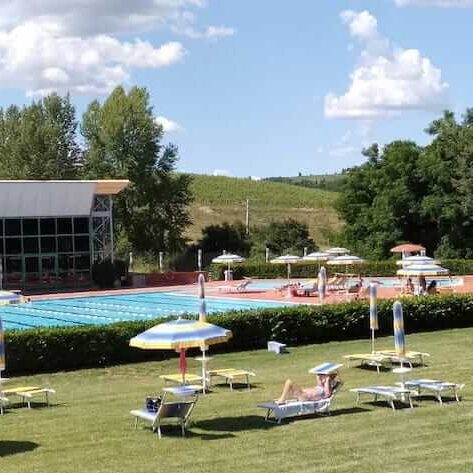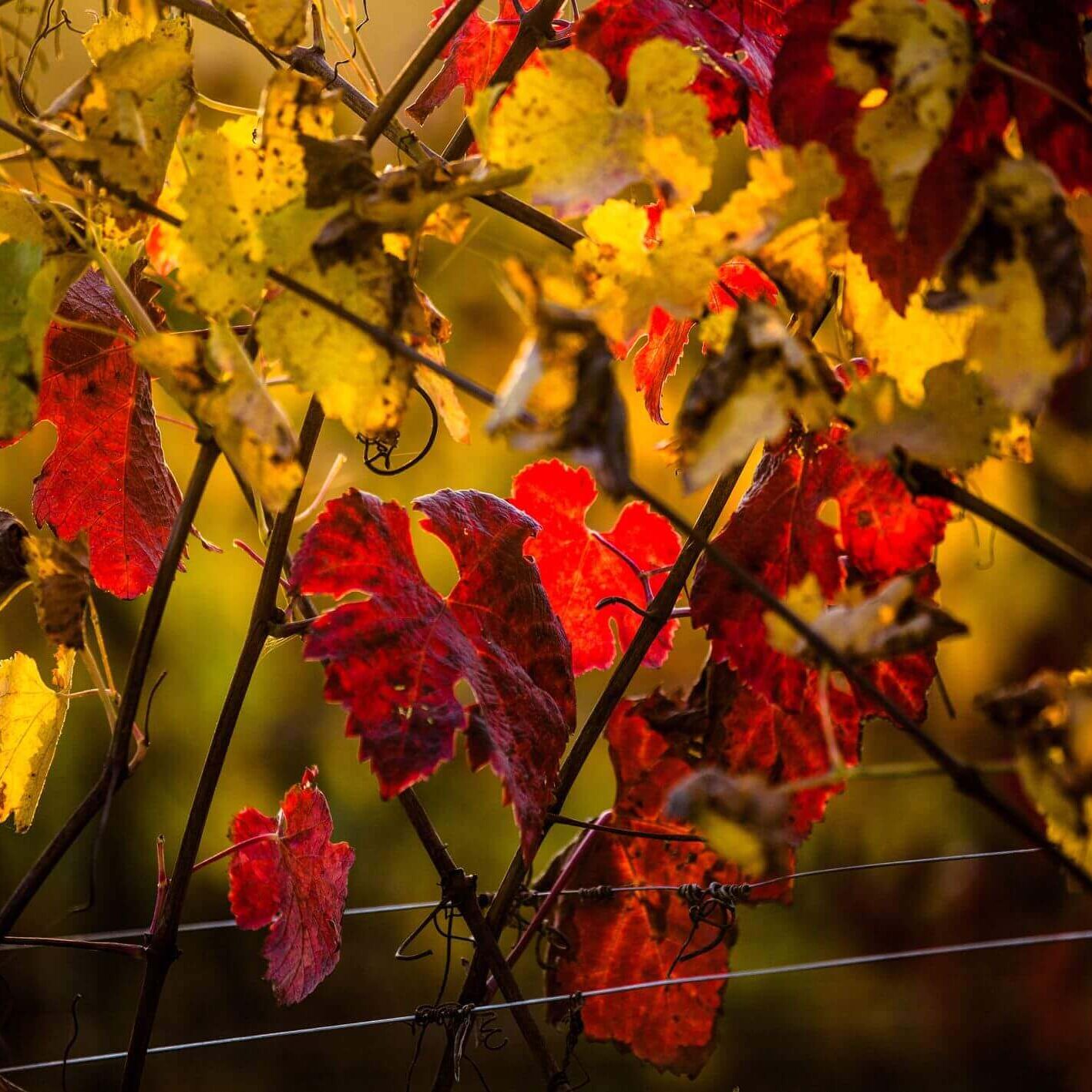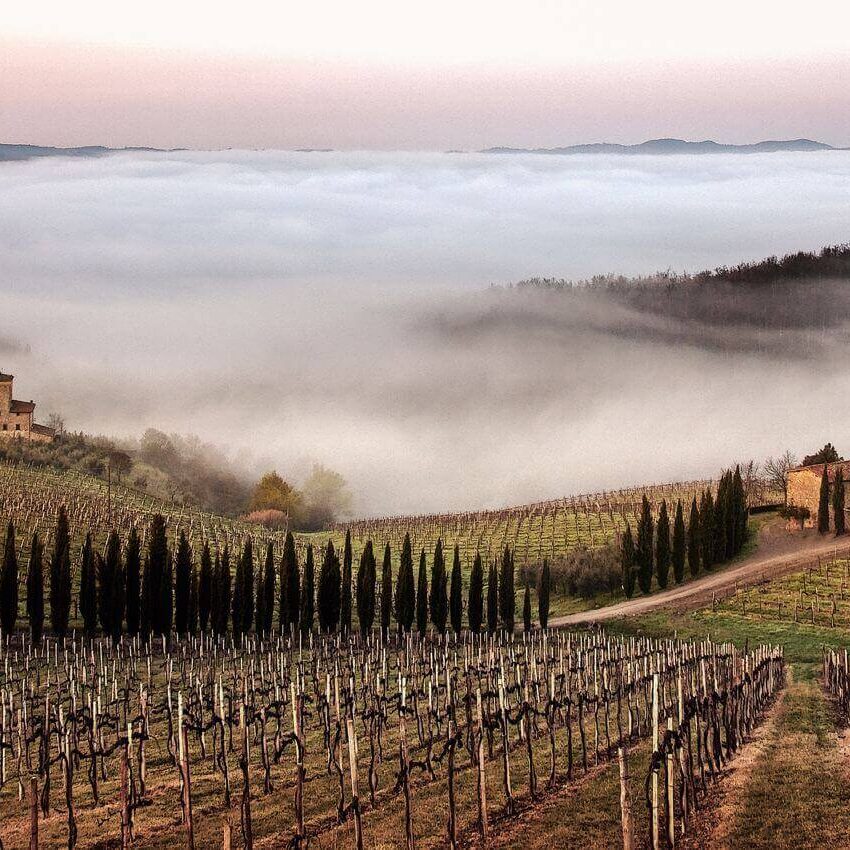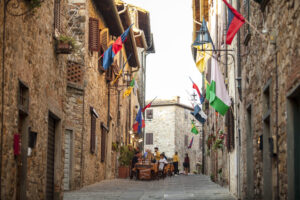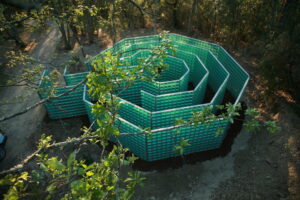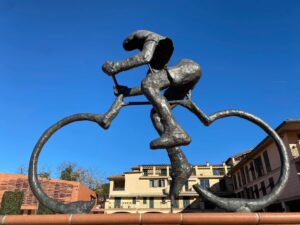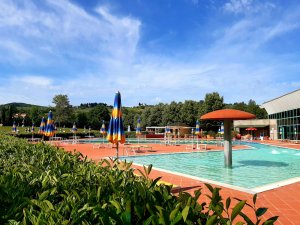Castellina in Chianti
A STROLL THROUGH ANCIENT HISTORY AMIDST MEDIEVAL ATMOSPHERE AND PANORAMIC VIEWS
 he evocative roads, ancient patrician buildings, and medieval routes immerse travellers in an ancient ambiance. Castellina in Chianti was the scene of many battles given its strategic position between Florence and Siena; for this reason the walls that surround it were reinforced repeatedly over time by architects of the caliber of Giuliano da Sangallo and Filippo Brunelleschi, who built the Via delle Volte, the evocative walkway capable of protecting the town from newly-invented firearms.
he evocative roads, ancient patrician buildings, and medieval routes immerse travellers in an ancient ambiance. Castellina in Chianti was the scene of many battles given its strategic position between Florence and Siena; for this reason the walls that surround it were reinforced repeatedly over time by architects of the caliber of Giuliano da Sangallo and Filippo Brunelleschi, who built the Via delle Volte, the evocative walkway capable of protecting the town from newly-invented firearms.
Dominating the historic centre is the ancient (15th century) Rocca, an imposing tower whose keep offers a breathtaking panorama through the rooftops of the town. Inside is the Museo Archeologico del Chianti (Archeological Museum of Chianti), the perfect place to trace the identity of the area through the words left by its earliest inhabitants. Continuing along Via Ferruccio, you will arrive at the Church of San Salvatore, built in the 15th century and rebuilt in the neo-Romanesque style after it was damaged during World War II; inside you can see the Madonna del Latte, a fresco attributed to Bicci di Lorenzo, a famous Florentine painter of the 15th century.
INFO
Ufficio Turistico (Tourist Office)
Via Ferruccio, 40, Castellina in Chianti SI
+39 0577 741392
ufficioturistico@comune.castellina.si.it
www.comune.castellina.si.it
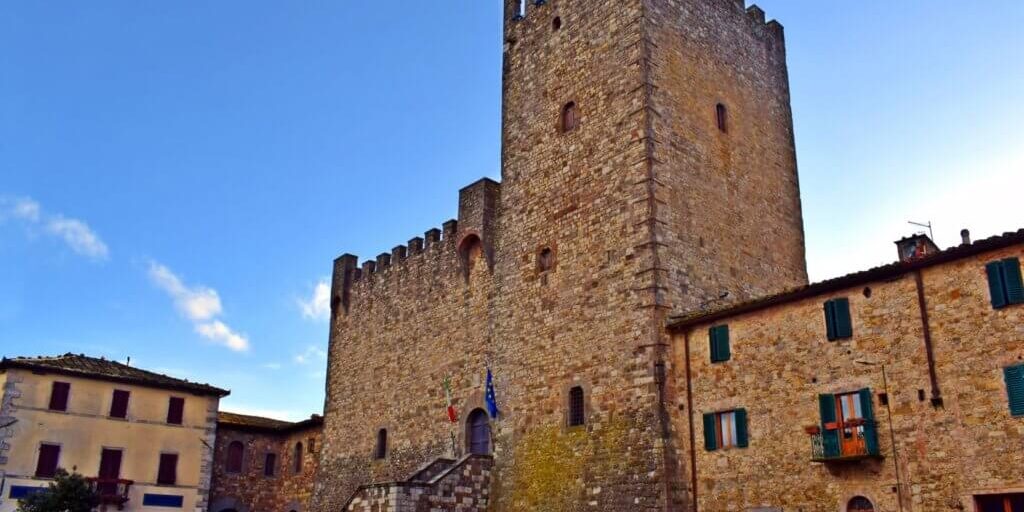
"In the footsteps of the Etruscans in an area rich in nature and culinary traditions"
The historic centre of the town has a characteristic medieval atmosphere thanks to the afore-mentioned Via delle Volte, the covered street where you can find artisanal workshops and restaurants. Among secret passageways and small openings in the walls giving glimpses of the panorama of Tuscan hills, this route has undergone changes over time, but it has retained the charm owed to the ingenuity of Filippo Brunelleschi.
Travelling all over the country roads of Castellina in Chianti is a spectacular experience in which wheat fields, vineyards, and cypresses follow one another among the pleasing curves and aromas of the countryside. In this landscape you can find two important archeological sites: the Necropolis of Poggino and the Tumulo di Montecalvario (the Mound of Mount Calvary). The latter site, which dates from the 6th century B.C., includes four sepulchral chambers with a diameter of about 50 meters in which were found the remains of an Etruscan “chariot” now displayed in the Museo Archeologico del Chianti Senese (Archeological Museum of the Siena Area of Chianti) in the historic centre. Meanwhile, the Necropolis of Poggino is found near Fonterutoli, in a wooded area where five tombs dating from the 6th century B.C. can be seen.
In the green heart of Tuscany, you can find a territory known all over the world for its beauty. Let’s talk about Chianti, a region rich in vineyards and olive groves, where slow living has become a universal keyword.
RELATED ARTICLES
OTHER PLACES TO SEE
Hospitalities
Agritourism farms, emblems of sustainability, are the type of accommodation that most distinguishes this land of rural farmhouses scattered throughout the silence of the countryside. The castles, villas, and historic homes are immersed in a noble atmosphere that evokes times gone by. Awakening in Chianti is a unique experience.
Discover on

